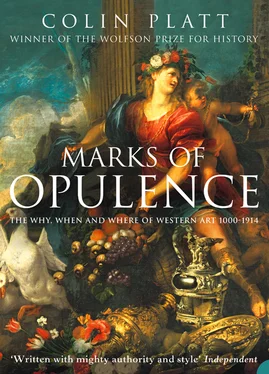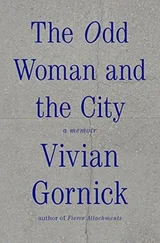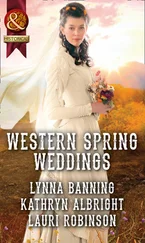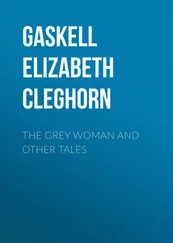It was this single-minded concentration on the soul’s repose which, whatever the announced purpose of the work in hand, inspired the great majority of fifteenth-century Grands Projets. Thus it was Archbishop Chichele’s clearly expressed desire in 1438 that the ‘poor and indigent scholars’ of his new Oxford college at All Souls should
not so much ply therein the various sciences and faculties, as with all devotion pray for the souls of glorious memory of Henry V, lately King of England and France … of the lord Thomas, Duke of Clarence [Henry’s brother], and other lords and lieges of the realm of England whom the havoc of that warfare between the two said realms has drenched with the bowl of bitter death.
And it was in this century, in particular, that the funding of universities attracted the attention of propertied but heirless bishops whose concern to improve the quality of diocesan clergy ranked second after the protection of their souls. ‘There never was a prelate so good to us as you have been’, wrote the grateful scholars of Oxford to Richard Beauchamp, Bishop of Salisbury (1450–81), shortly before his death: ‘You promised us the sun, and you have given us the moon also.’ Yet Bishop Beauchamp, in point of fact, was among the less substantial of their benefactors. 29
Fifteenth-century Europe, half-empty and bullion-starved, was both socially and economically disadvantaged. Yet so general was the belief in the cleansing power of prayer that there has never been another time in the entire history of the Church when so much funding has been directed to just one end. Furthermore, if the costly death-styles of the wealthy had established a new climate for exceptionally generous investment in the arts, so also had the life-styles of those ‘great ones’ of the century – usually the same – whose chosen mode of government was to dazzle and overawe by exhibitions of conspicuous waste. Henry Beaufort, the ‘Rich Cardinal’, was dynast as well as priest. And for him as for his siblings (the sons and daughters of John of Gaunt) ‘dispendiousness’ and ‘great giving’ – the distinguishing marks of the generosus – were the inescapable accompaniments of high rank. ‘One morning, on a solemn feast’, relates Vespasiano da Bisticci (Florentine bookseller and gossip), taking his story from Antonio dei Pazzi, a fellow citizen, ‘the cardinal assembled a great company for which two rooms were prepared, hung with the richest cloth and arranged all round to hold silver ornaments, one of them being full of cups of silver, and the other with cups gilded or golden. Afterwards Pazzi was taken into a very sumptuous chamber, and seven strong boxes full of English articles of price were exhibited to him.’ 30 Almost nothing now remains of a collection so extraordinary that even a Florentine banker was impressed. However, among the many treasures known to have stuck to the old cardinal’s fingers in his last acquisitive decade was the Royal Gold Cup of Charles VI of France, made in Paris for Jean de Berri in the late 1380s and subsequently presented to his nephew, the young king. Now in the British Museum, the cup is decorated on bowl and cover with fine enamel miniatures of the life, miracles and martyrdom of St Agnes. Yet for all its religious imagery, this precious vessel was (and long remained) a secular object, made chiefly for display and probably always intended for ‘great giving’. 31
On Charles VI’s death in 1422 when by the terms of the Treaty of Troyes (1420) the infant Henry VI of England assumed his throne, the cup had come into the possession of Beaufort’s nephew, John of Lancaster, Duke of Bedford and Regent of France. And Bedford himself was a patron in the grand manner, both collector and acknowledged connoisseur. As would-be promoter of the fragile union of France and England brought about by Henry V’s marriage to Catherine of Valois (daughter of Charles VI), Bedford had frequent cause for political giving. However, his collecting instincts were not exclusively pragmatic. And the possession of objects of great value has always found much favour with the rich. One who caught the habit early was Francesco Gonzaga (1444–83), cardinal at the age of seventeen, whose particular private passion was for carved and engraved gemstones, both cameos and intaglios, many of them recovered from ancient sites. The cardinal’s other special interest was in books. While no great scholar himself, Gonzaga was the patron of leading contemporary humanists. And almost a quarter of his large collection was given over to the classical texts to which his friends among the literati had introduced him. As inventoried on Gonzaga’s death in 1483, his books included the poetry of Terence and Virgil, Horace and Ovid; the oratory of Cicero; the ethics of Aristotle; the histories of Sallust, Livy and Plutarch; the comedies of Plautus, the satires of Juvenal, the tragedies of Seneca the Younger, and many more. In his own tongue, Gonzaga read the poetry of Dante and Petrarch, the short stories of Boccaccio, and the marvels of the explorer Marco Polo. In the cardinal’s library, the largest single category – 66 books in total – was made up of works of religion. Nevertheless, the contrast overall with the even greater collections of another clerical bibliophile, Guillaume d’Estouteville, Cardinal Bishop of Ostia, was very striking. Cardinal d’Estouteville died the same year. But the Frenchman was no humanist. And while his library was extensive, his reading was chiefly limited to theology and patristics, to contemporary devotional writings, and to the law. 32
To be or not a humanist was never a stark choice for European intellectuals of North and South. In France, as early as the 1410s, Jean de Montreuil, Charles VI’s learned chancellor, was a collector of classical texts, a reader of Petrarch, and an admirer of Leonardo Bruni, the humanist scholar, who was later himself Chancellor of Florence (1427–44). And when Poggio Bracciolini, subsequently Chancellor of Florence in his turn, came to England in 1429 to comb monastic libraries for antique texts, he was welcomed there by Cardinal Beaufort among others. Yet what Poggio encountered could hardly have been more remote from his experience. ‘The past is a foreign country’, L.P. Hartley once declared, ‘they do things differently there.’ And equally unbridgeable in Poggio’s generation was the gulf between Mediterranean and Northern life-styles. On returning to Italy, Vespasiano tells us, Poggio ‘had many witty stories to tell of adventures he had encountered in England and Germany when he went thither’, among them a favourite tale of a four-hour English banquet during which ‘he had been forced to rise and bathe his eyes with cold water to prevent him from falling asleep’. Poggio – ‘the foe of all deceit and pretence’ – was also wickedly dismissive of Northern scholars. But one of the things Poggio reported, and which was confirmed by other travellers, had particular resonance for the arts. ‘The nobles of England’, Poggio wrote, ‘deem it disgraceful to reside in cities and prefer to live in country retirement. They reckon a man’s nobility by the size of his landed estate. They spend their time over agriculture, and traffic in wool and sheep.’ 33 In contrast, Florentine noblemen preferred the urban life, while it was in the big-city populations of north and central Italy that the artists of the Renaissance found their patrons.
Some seventy years later, the Venetian author of A Relation of England ( c. 1500) would again observe that ‘there are scarcely any towns of importance in the kingdom’, the exceptions being London, Bristol and York. Few Englishmen, furthermore, with the exception of the clergy, ‘are addicted to the study of letters’, even though ‘they have great advantages for study, there being two general Universities in the kingdom, Oxford and Cambridge, in which are many colleges founded for the maintenance of poor scholars’. Yet neither their rustic predilections nor the poverty of their scholarship prevented the English from being ‘great lovers of themselves, and of everything belonging to them; they think that there are no other men than themselves, and no other world but England’. And with English cloth just then commanding a higher premium than ever before, their self-esteem was not without cause. ‘The riches of England’, the Venetian continued, ‘are greater than those of any other country in Europe … This is owing, in the first place, to the great fertility of the soil … Next, the sale of their valuable tin brings in a large sum of money to the kingdom; but still more do they derive from their extraordinary abundance of wool, which bears such a high price and reputation throughout Europe.’ 34 Where sheep paid for all, it was less a horror of the new which excluded the Renaissance from the North than the sufficient quality of the life-styles already practised there.
Читать дальше












